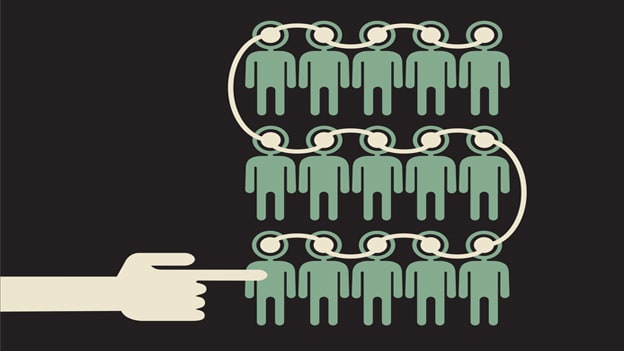Empowering employees through continual engagement

A common factor influencing the success of most organizations is engaged and focused on employees that are led by a visionary leader and an operations group that connects with the employees.
While strategies are key to success, a real win for any organization lies in the execution of the strategy such that revenue goals are reached. And this is achieved by the employees at large, so it is important to have focused employees executing the strategy.
How does one achieve this objective, on an on-going basis, to ensure success? The answer lies in ‘continual engagement’. Every organization should build or have a strong process for employee engagement on personal, career, cultural, and social levels.
If there is a general consensus that employees are growing holistically within an organization, it is the most likely that success will be right around the corner. There will be a sense of belonging and a compelling urge among the workforce to ‘return the favor’.
Many successful organizations have a strong HRD team whose focus is to continually create these engagements, which plays a key role in discovering and nurturing the leaders of tomorrow.
For employees, the recall value of any engagement comes from it surpassing their expectations. As a first step, the HRD team should come up with a comprehensive set of policies which are interpreted as fair and create a win-win situation for both the organization and the employees. On this basis, organizations can build some innovative initiatives to foster a work-life balance for employees. For example, having a psychologist visit the offices so employees can discuss their personal problems and arrive at possible solutions. This approach not only provides a sense of relief to employees but also serves to improve their focus on work. This is a good example of a non-career engagement, which is a win-win for both parties.
The other, more conventional engagements are sessions on financial planning, which lead to financial success for employees. Employees of a certain age group are sanitized on life insurance principles. Having partnerships for term insurance for the employees is also a great way to make an employee feel protected and bound to the organization.
Ensuring the employees are current with their skills also leads to a confident and connected employee pool. Providing skill-oriented training creates a feeling of responsibility among the employees, which, in turn, manifests in the company’s daily operations.
Obviously, this is an ongoing activity, which requires a significant level of investment. In testing times, many organizations are tempted to cut down the training budget, and this move comes back to haunt them when the competition heats up. Hence, prudent decisions need to be made when it comes to keeping your workforce ready for the next wave of disruptions.
The HRD should find ways to promote the organization’s culture among the existing and new employees. An organization that is truly considered an ‘equal opportunity company’ by its employees, especially on the social media, attracts the best talent.
The HRD’s review cycles are a key indicator to the employee on how the organization views its workforce. Creating an employee perception that they are in a ‘fair’ organization takes time; so we need to ensure that it is fiercely protected.
Another way to enhance the ‘culture’ of the organization is to include employees in its philanthropic activities. Being part of such initiatives again creates a sense of belonging for the employees.
Social initiatives to engage the millennials have seen a clear upward trend. The balance of work versus non-work is more prominent now than ever before and recognizing it can make the difference between an ‘engaged’ employee and one that is not.
Sports, hiking, cycling, running, and other such initiatives foster the employee-employer bond and improve the former’s physical well-being as well.
All of the above, if done effectively, will create a team of empowered employees who will be their organization’s brand ambassadors, driving the best talent in the industry to the organization.
HR Technology Popular Trends
Every organization wants to move away from manager perception to a set of data points to make decisions that are the most often, accurate. Obviously, depending on managerial input, which could be fraught with bias and nepotism, is not what organizations want.
Mature organizations have moved on from individual bias to use technology to make informed decisions. Interestingly, when this approach is implemented in a smaller organization, it becomes a part of the ‘DNA’ as the organization continues to grow. It is a rather uphill task when it is ‘introduced’ into a larger organization.
A few other HRMS products in the market, such as Workday, can help organizations achieve the same objectives. Having a singular central database of an employee’s personal and skill-related information is vital for making the right analysis and decisions. Some of them encompass benefits management as well.
For employee engagement, tools such as Gratifi andYouEarnedIt are used for peer recognition and rewards. Employee recognition through these tools is obviously a great way to make them more visible and, more importantly, set a precedent and build the culture of the organization.
HR technology products are continually evolving to address the millennials and creating/modifying products to finding ways to engage with them. The more that happens, the better is the chance of empowering the employees to meet company and employee objectives.













